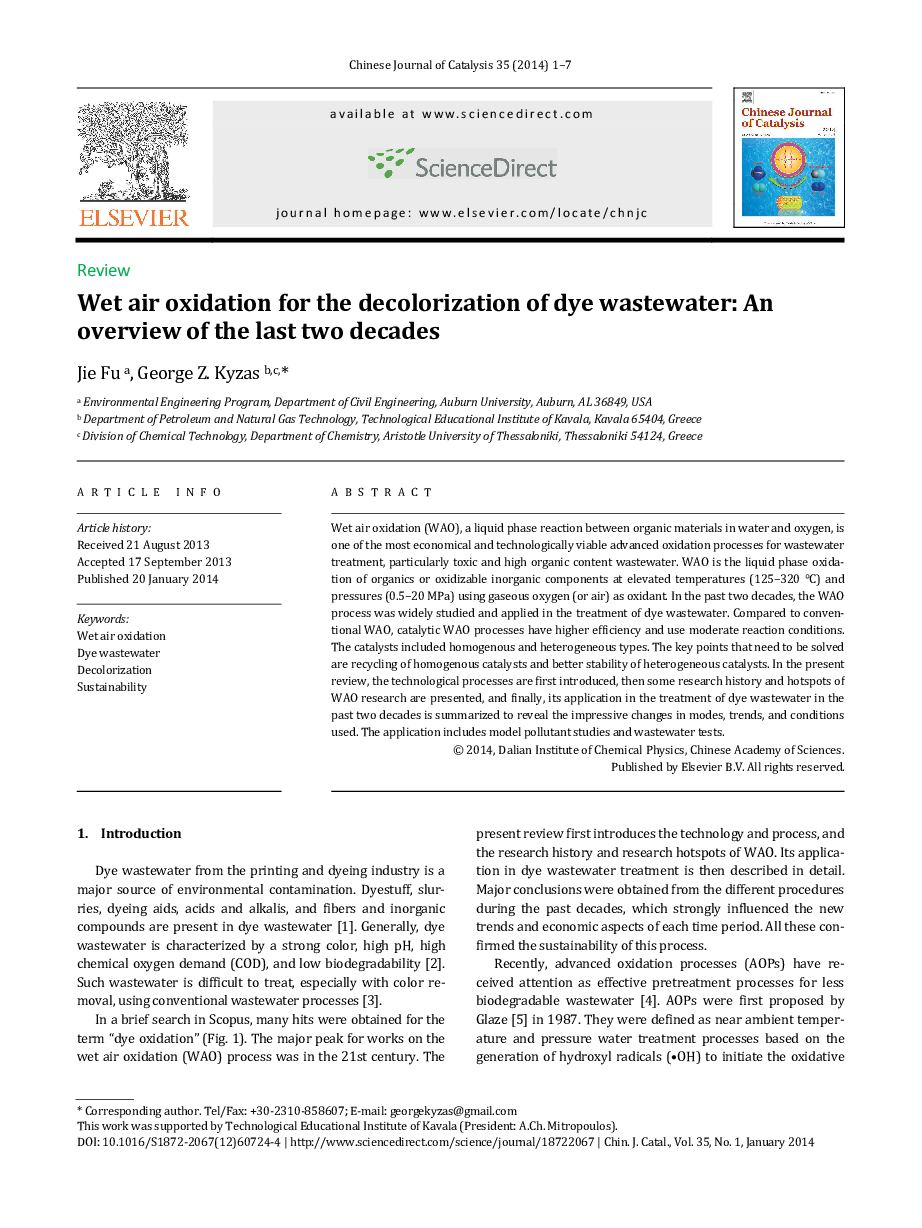| Article ID | Journal | Published Year | Pages | File Type |
|---|---|---|---|---|
| 59445 | Chinese Journal of Catalysis | 2014 | 7 Pages |
Wet air oxidation (WAO), a liquid phase reaction between organic materials in water and oxygen, is one of the most economical and technologically viable advanced oxidation processes for wastewater treatment, particularly toxic and high organic content wastewater. WAO is the liquid phase oxidation of organics or oxidizable inorganic components at elevated temperatures (125–320°C) and pressures (0.5–20 MPa) using gaseous oxygen (or air) as oxidant. In the past two decades, the WAO process was widely studied and applied in the treatment of dye wastewater. Compared to conventional WAO, catalytic WAO processes have higher efficiency and use moderate reaction conditions. The catalysts included homogenous and heterogeneous types. The key points that need to be solved are recycling of homogenous catalysts and better stability of heterogeneous catalysts. In the present review, the technological processes are first introduced, then some research history and hotspots of WAO research are presented, and finally, its application in the treatment of dye wastewater in the past two decades is summarized to reveal the impressive changes in modes, trends, and conditions used. The application includes model pollutant studies and wastewater tests.
Graphical AbstractWet air oxidation (WAO) is one of the most economically and technologically viable advanced oxidation processes for dye wastewater. The wide studies on WAO of dye wastewater began from 1995. Recent studies focused on real wastewaters.Figure optionsDownload full-size imageDownload as PowerPoint slide
